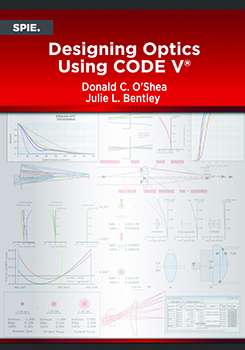|
Thus far, we have shown how to enter a lens design into CODE V, describe its faults, and then improve its performance. Our objective in this chapter is to design a lens to meet the requirements for a specific application. Starting with a simple lens system, it will be evaluated to see if it satisfies our requirements. If not, then the design will be modified and re-evaluated through a series of steps or iterations until a design is established that can perform to the specified conditions. 12.1 Defining the Problem Now let's use the concepts that have been demonstrated in previous chapters to design a lens for a simple security camera. Modern security cameras can be quite complex, operating in both the visible and near-infrared wavelength bands with very large fields of view (FoVs) and mounted on a motorized stage to scan and zoom the scene. For now, we will focus on a much simpler security camera, the purpose of which is to record objects and activity within a moderately sized (fixed) field and provide surveillance in the visible band only. In most instances, such cameras are mounted overhead or on ceilings (Fig. 12.1). Therefore, the objects of interest will be located far enough away from the lens that we may assume that the object is at infinity. This type of optical system consists of an imaging lens and a CCD sensor. But which lens and which sensor should we use? Do we need a custom design for the lens? For the sensor? In the real world, the cost of materials, manufacturing, or assembly for an optical system must be considered before arriving at a final design solution. While custom lenses are fairly common, the choice of a sensor is pretty much limited to one of the existing standard formats (see Table 11.1) because the cost of the design and fabrication of a custom sensor would be prohibitive. For this reason, the CCD is usually chosen first in many optical design projects, and then a custom lens is designed to match the sensor to the requirements of the application. |
|
|


